Guyana: Day 3 – Uitvlugt - Part II
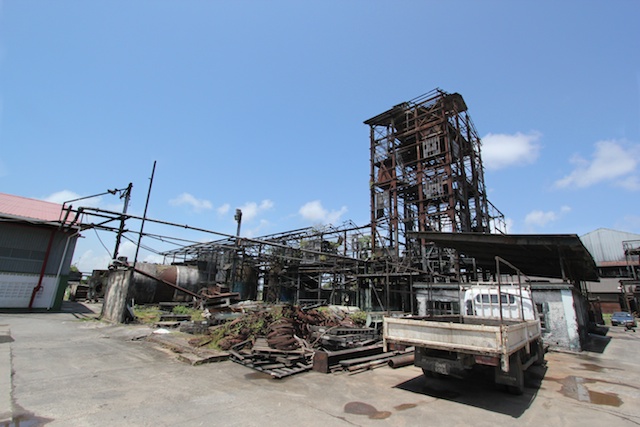
After touring the ICBU sugar factory, we headed over to the former ICBU distillery where DDL still houses a great number of casks. The equipment, however, has been stripped and taken over to the Diamond site, so only a shell of the original building remains. DDL had three main distilleries before the consolidation was finalized about fifteen years ago: Diamond, Uitvlugt, and Enmore.
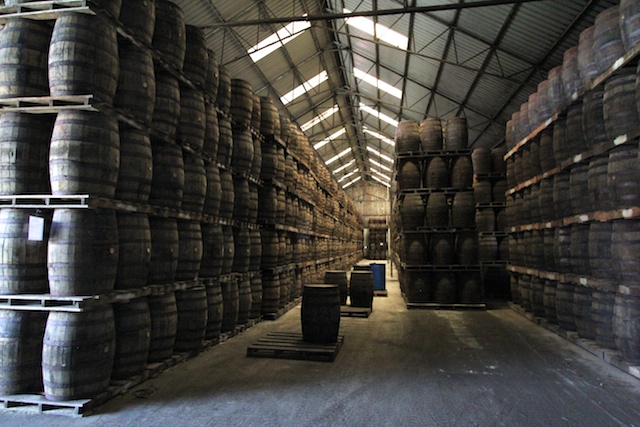
The warehouses are huge and they're absolutely packed with mature barrels. There's a lot of rum in wood at the Uitvlugt facility.
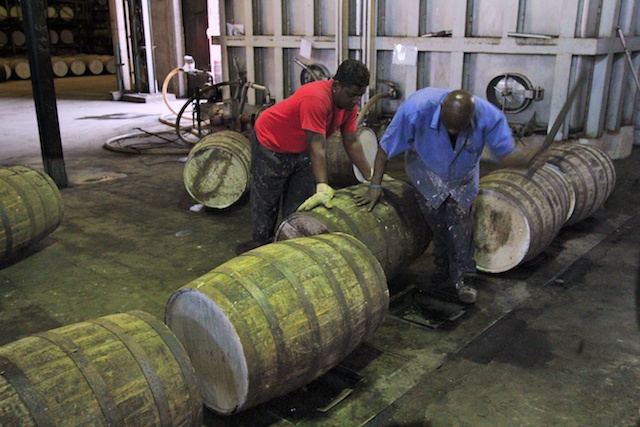
When the rums are ready for bottling, the team rolls the barrels over to a grate in the floor where the bung is removed and the rum is transferred to a tanker.

Just outside the former distillery and down the small river lies the vast sugar cane fields that stretch all the way out to the coast. After taking a short walk through the estate, we hopped in the car and headed back over the Demerara river towards Diamond to make some rum.

We got back to the DDL site where the engineers were waiting to give me a lesson in column still distillation. If you've ever been confused about the difference between column and pot still distillation (like maybe you've heard a bunch of people talk about how superior pot stills are, but not specifically why that might be), then let me clear it up for you real easily. Making whisky in a pot still is basically like boiling a pot on the stove and then trapping the alcoholic vapor into a copper neck, which feeds it into a condenser. Once you've boiled all your alcoholic beverage and the alcohol is evaporated, you have to start over – clean out the pot, and then begin again with a new batch. A column still, however, can run for weeks and weeks without ever needing to stop and reload. The liquid is fed into the first column and it keeps pouring it until you run out of wash (which is never at DDL). Even if you need to switch up the type of spirit, this can be done without halting the process or slowing it down. As the vapor goes up the column through each plate, more and more alcohol is rectified.
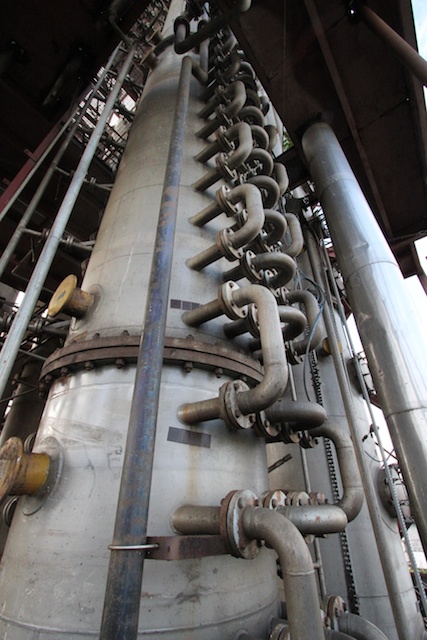
The more advanced the column still, the more you can manipulate the distillate by increasing or decreasing the rectification process (therefore resulting in a cleaner or heavier spirit). The "new" still at El Dorado can crank out 15,000 liters a day and it's all operated from the control room. The engineers can monitor the proof and the efficiency of all the distillate coming off the four columns. Three of the four were in operation while I was watching. There's another tall Coffey column still (pictured above) next to the "new" still, which functions much the same way, but has a set of copper coils between each plate to increase the ester content of the distillate.

If you need to check quality, you can always hit the valve on each column and take a sample. This one tasted fresh and clean.
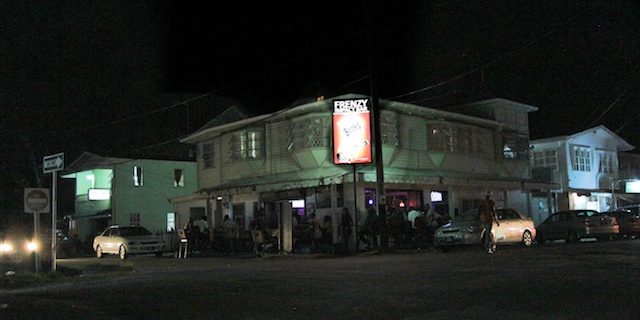
When the others got back from their day with Shaun, I headed out with Najuma for downtown Georgetown where we met up with them at a local bar. We had a few beers, some fried snapper with hot sauce, and took in some of the local culture.
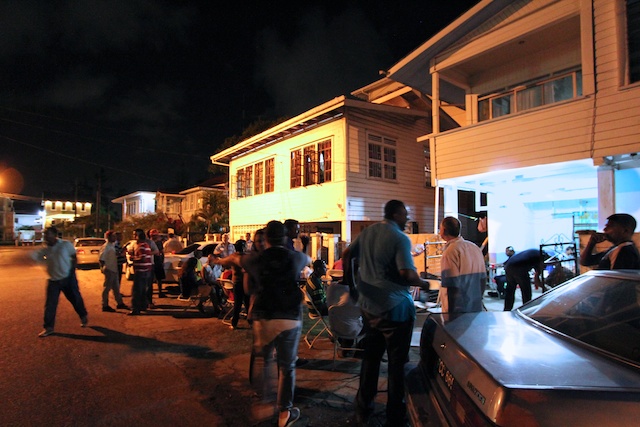
The best part, however, was when Shaun took us by one the DDL employee's house for what's called a "9 Day Party" in Guyana. After a child is born, the family throws a party nine days later for friends and family in celebration. We had an absolute blast hanging out on the street, drinking rum cocktails, and listening to music. The new baby, Mia, was adorable and definitely worthy of all the praise.
-David Driscoll
